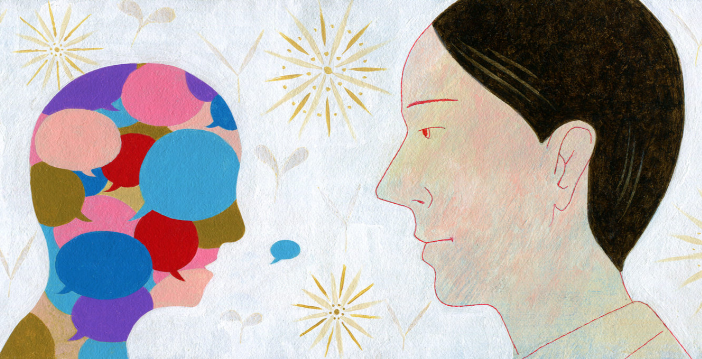Hearing those words—“Your child has autism”—can be terrifying for any parent. It marks a lifetime of uncertainty both behaviorally and emotionally for the child. Though every person with autism spectrum disorder (ASD) is unique, the need for therapy and guidance throughout their youth is a given.
Applied behavioral analysis, or ABA, is the most traditional form of ASD therapy. Experts consider it the “gold standard” for autism treatment because of its great success in children and adults alike. In recent years, however, patients undergoing this treatment have spoken out about its flaws and brutal methodology.
ABA therapy was first introduced in the late 1980s by behavioralist Dr. Ivar Lovaas. He believed he could suppress autistic symptoms and traits. The goal is to avoid self-harming behaviors by granting rewards and punishments.
While it sounds noble in theory, the underlying objectives have caused great controversy. The fundamental approach to helping these patients is to make their actions somewhat “normal”—to eliminate any type of traditional autistic behavior.
We live in a world where the word “autism” has become a taboo. When we hear anything about an autistic child, we immediately picture one who’s non-verbal. So when an employer sees that a job candidate has autism, they’re likely to think of the worst.
That’s the issue ASD patients and specialists are facing. Though it’s in the name, too many of us no longer see autism as a spectrum, when in reality, many ASD patients are fully verbal and excellent maskers—covering up autistic traits with what is perceived to be normal.
In recent years, especially with the use of social media, ASD patients have been working to spread correct information about autism and to end the stigma surrounding it. In part, many feel that ABA therapy just further plays into this stigma.
It’s not about neurodiversity and accepting one’s differences, but rather about suppressing them. The problem in this is that often it’s not the patient’s decision but rather the parents’.
Many parents of children with autism understandably want their child to fit in. In truth, ABA therapy does help young students socialize with their peers who may not understand ASD. But as they get older, ABA patients are taught that their natural behavior just isn’t good enough to survive in the real world.
ABA therapy was built on an abusive foundation. While, of course, the therapy has evolved with further research, this basic underpinning still remains.
In fact, when Dr. Ivar Lovaas was first studying autism in the mid-1960s, Life Magazine revealed some of his findings.
The published article shows images of children being hit and yelled at as punishment. Being paired with loving affection as a reward, these children were set up to be confused and even abused.
In the 21st century, treatment like that of the 1960s would never be allowed. But what is allowed is the confusion. To build a child’s entire life on rewards and punishments is harsh — because in reality, good work often goes unaccounted for.
As long as ABA therapy’s core principles are the same, there will be controversy. Many critics think that it’s too harsh and demanding, especially for young children. Though that’s often true, the real issue is closed-mindedness around the subject.
Autism’s symptoms and traits go far beyond behavior. Many parents who have turned away from ABA therapy often ask, “If not ABA, then what?” Considering the lack of options for ASD patients, it’s a valid question.
Approaches such as occupational therapy, mindfulness meditation, and even acupuncture and herbalism can help ASD patients manage their own symptoms while continuing to gain a further understanding of their own relationship with ASD.
This story was originally published on The Uproar on January 20, 2021.
































![IN THE SPOTLIGHT: Junior Zalie Mann performs “I Love to Cry at Weddings,” an ensemble piece from the fall musical Sweet Charity, to prospective students during the Fine Arts Showcase on Wednesday, Nov. 8. The showcase is a compilation of performances and demonstrations from each fine arts strand offered at McCallum. This show is put on so that prospective students can see if they are interested in joining an academy or major.
Sweet Charity originally ran the weekends of Sept. 28 and Oct. 8, but made a comeback for the Fine Arts Showcase.
“[Being at the front in the spotlight] is my favorite part of the whole dance, so I was super happy to be on stage performing and smiling at the audience,” Mann said.
Mann performed in both the musical theatre performance and dance excerpt “Ethereal,” a contemporary piece choreographed by the new dance director Terrance Carson, in the showcase. With also being a dance ambassador, Mann got to talk about what MAC dance is, her experience and answer any questions the aspiring arts majors and their parents may have.
Caption by Maya Tackett.](https://bestofsno.com/wp-content/uploads/2024/02/53321803427_47cd17fe70_o-1-1200x800.jpg)
![SPREADING THE JOY: Sophomore Chim Becker poses with sophomores Cozbi Sims and Lou Davidson while manning a table at the Hispanic Heritage treat day during lunch of Sept 28. Becker is a part of the students of color alliance, who put together the activity to raise money for their club.
“It [the stand] was really fun because McCallum has a lot of latino kids,” Becker said. “And I think it was nice that I could share the stuff that I usually just have at home with people who have never tried it before.”
Becker recognizes the importance of celebrating Hispanic heritage at Mac.
“I think its important to celebrate,” Becker said. “Because our culture is awesome and super cool, and everybody should be able to learn about other cultures of the world.”
Caption by JoJo Barnard.](https://bestofsno.com/wp-content/uploads/2024/01/53221601352_4127a81c41_o-1200x675.jpg)






